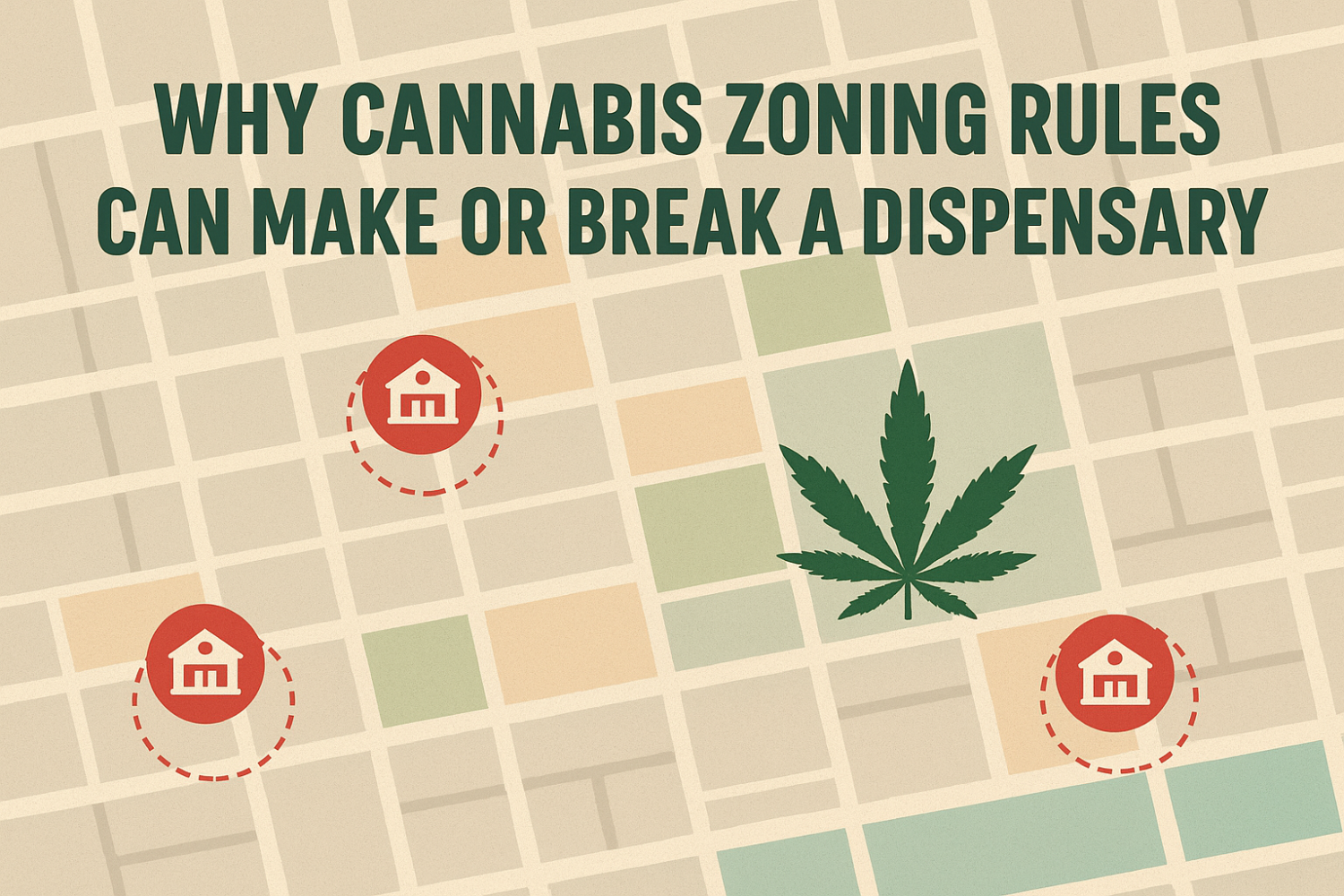Cannabis zoning laws decide where dispensaries can (and can’t) exist. They’re often written with good intentions — keeping shops away from schools, daycares, or churches — but in practice, these dispensary zoning rules can wipe out entire neighborhoods, push operators into overpriced districts, and create a maze of restrictions that even the most seasoned entrepreneurs struggle to navigate.
When people talk about cannabis legalization, the spotlight usually lands on state laws, tax rates, or the culture shift around consumption. But for anyone actually trying to open a dispensary, the real battleground isn’t the courtroom or the legislature — it’s the map.
For cannabis business owners, zoning is more than red tape. It’s the invisible hand shaping whether your shop thrives, struggles, or never gets off the ground. A dispensary might have the funding, the license, and the staff lined up — but if the property isn’t zoned right, it doesn’t matter.
And it’s not just a hypothetical headache.
Across the country, operators are facing costly setbacks because of zoning conflicts, unexpected rule changes, or mistakes made by regulators themselves.
In New York, one oversight forced a dozen or more dispensaries into legal battles after investing large sums of money into locations regulators later claimed were too close to schools. It’s a reminder that cannabis zoning laws can be just as powerful as the market.
How Zoning Shapes the Cannabis Market
Most states that legalize cannabis include buffer rules designed to keep dispensaries away from “sensitive areas” like schools, daycares, and churches. In many cities, the rules specify how far dispensaries need to be from schools — often at least 500 to 1,000 feet. While the intention is community safety, the reality is it drastically limits where shops can operate.
In some urban areas, that buffer wipes out entire neighborhoods from being eligible. In rural regions, it may push dispensaries onto hard-to-access roads.
For consumers, that means less convenience.
For businesses, it means higher rents, bidding wars over compliant properties, and a lot of money on the line before a shop even opens.
For many operators, opening a dispensary costs more than they expect simply because compliant real estate is so scarce.
A Costly Lesson From New York
New York recently showed how critical zoning is — and how damaging mistakes can be. Regulators there miscalculated the 500-foot buffer around schools, measuring from school doors instead of property lines. The result? Dozens of dispensaries found themselves technically out of compliance after already spending hundreds of thousands to millions on their locations.
The fallout was lawsuits, relocation funds that didn’t cover real costs, and business owners left in limbo. The takeaway for anyone in cannabis: even when you think you’ve followed dispensary zoning rules, regulatory errors can still put your investment at risk.
Why Equity Operators Are Hit Hardest
Zoning issues don’t impact all businesses equally. For large multi-state operators, relocating or absorbing higher rent is frustrating but survivable. For smaller equity operators — people promised priority in licensing as a form of restitution — these setbacks can be devastating. Many of them invest personal savings or take out risky loans.
One zoning law conflict can be the difference between opening doors and closing shop for good.
What Entrepreneurs Should Know
If you’re looking to open a dispensary, here are a few realities to keep in mind:
Start with the map. Before anything else, research local cannabis zoning laws in your city and county.
Hire local expertise. Land use attorneys or real estate professionals with cannabis experience are worth every penny.
Budget for setbacks. Build extra capital into your plan in case a location falls through or zoning rules shift.
Watch the politics. Local councils and zoning boards change rules all the time. Staying plugged into those conversations can save your business.
The Bigger Picture
The cannabis zoning laws are more than red tape — it’s the gatekeeper of the cannabis industry. It decides who gets access, who survives, and who’s shut out. For consumers, it affects where cannabis is available and how safe or convenient the shopping experience is. For businesses, it’s the line between thriving in a regulated market or being left on the sidelines.
Until cannabis is treated more like other retail — where liquor stores, convenience shops, and bars often sit close to schools without issue — dispensary zoning laws will continue to be one of the biggest barriers for the legal market. And as New York showed, when regulators get it wrong, the consequences ripple across the entire industry.







